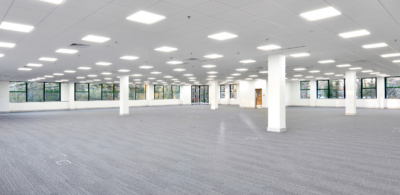Let’s not have a conversation about millennials. Not because they aren’t shaping popular culture: everything from working to shopping is experiencing a renaissance thanks to their influence. And not because everybody else has given their two cents already: there’s still a lot of value to be had in continuing the discussion about their unique qualities. Not even because of any perceived stigma about the “me” generation.
No, let’s not talk about millennials because doing so can just be too restrictive. Our brains’ natural tendency is to try to file things into neat, orderly boxes. Baby Boomers are hippies, Generation X embraced the tide of globalism and Millennials turned friends into social networks, right?
The problem with this way of thinking is that it can lead to decisions that are too narrow and reactive. Yes, millennials are now the largest generational group in the U.S. workforce. But does that mean they should be the only drivers of change in workplace design? Building a millennial-friendly workplace is important but instead of going all-in to duplicate their lifestyles, I think there are lessons to be learned from every group represented in today’s workforce—and the workforce of tomorrow.
There’s an App for That
This realization hit home for me recently as I watched my six-year-old son flip between picking out basketball sneakers and an educational app on his iPad. As part of “Generation Z,” when he starts his first job after college, he will likely never step foot in a mailroom. He probably won’t have a desk phone. He might have no idea what the term “hard copy” means.
But does that mean that businesses need to race to align with my son’s preferences and experiences? Yes and no. It might not do much good for an industrial property manager to have an Instagram account, but lots of building management systems are giving operations staff the ability to change equipment settings from their phones. For example, the Colliers Service Center’s framework allows tenants to submit service requests from any web browser, regardless of device. With mobile browsing quickly surpassing desktops, this kind of evolution makes a lot of sense.
The [Anti] Social Network
One of the popular complaints from groups that didn’t grow up with computers and smartphones is that “digital natives” have short attention spans and pay more attention to virtual reality than what is in front of them. While my son does seem to have selective hearing, some studies suggest that this group shares characteristics you might associate with Generation X or even Baby Boomers. One even showed that “53 percent of Generation Z respondents prefer face-to-face communication over tools like instant messaging and video conferencing.”
These findings suggest what we’ve long seen in workplace design: the trend pendulum swings one way and then it swings back, but never quite to the same place. And it’s highly likely that the newest capability, the newest workplace design format or the newest way of organizing employees won’t work for everybody. Because no matter your generation, there is no “one-size-fits-all” solution.
That’s why it’s so important that as stewards of resources that must appeal to wide audiences, we must become fluent in new ideas. Look at the world through eyes of each generation and try to understand the tools that come naturally to them and the possible implications for the workplace.
A good real estate strategy retains the agility to experiment and adapt; signing a lease shouldn’t mean being chained to just one concept. A retail operation could designate flagship or specialty locations to try new things without disrupting the regular workflow. A workplace might set up a hot-desking section or a “tomorrow-land” area with cutting-edge amenities to see what catches on. We can use this knowledge to find opportunities to drive meaningful change without fixing what isn’t broken.
Because at least in my house, my son thinks innovations like grocery delivery apps are a neat trick. But sometimes, he wants to go to the good old-fashioned grocery store to get a free cookie.
A mentor, a real estate executive and a mom, Karen spends time all over the map. If she isn’t traveling, Karen is busy with everything from IREM to Virginia Tech’s Real Estate program. When she has a few minutes to spare, she considers it a personal mission to find new homes for all of Lucky Dog Animal Rescue’s four-legged companions.

 Karen Whitt
Karen Whitt
 Martin Woodrow
Martin Woodrow Chris Zlocki
Chris Zlocki
 Aaron Jodka
Aaron Jodka
 Andrew Steele
Andrew Steele